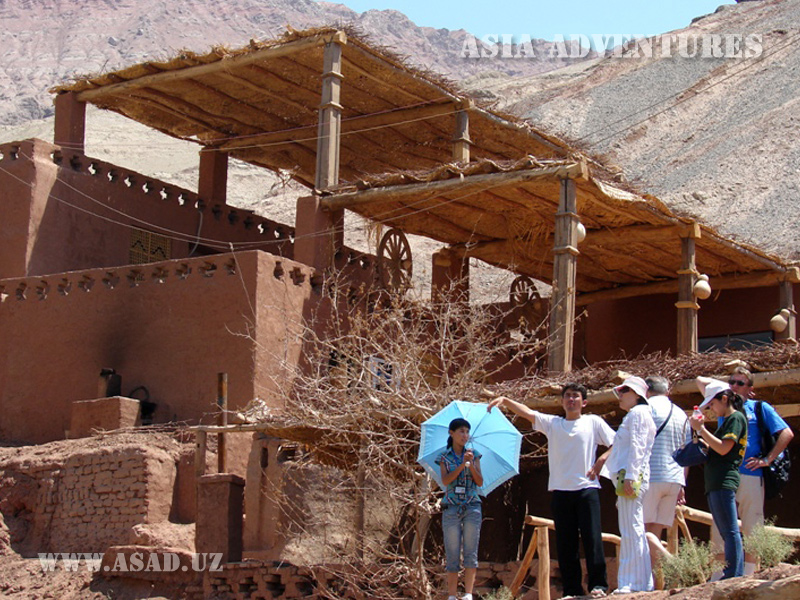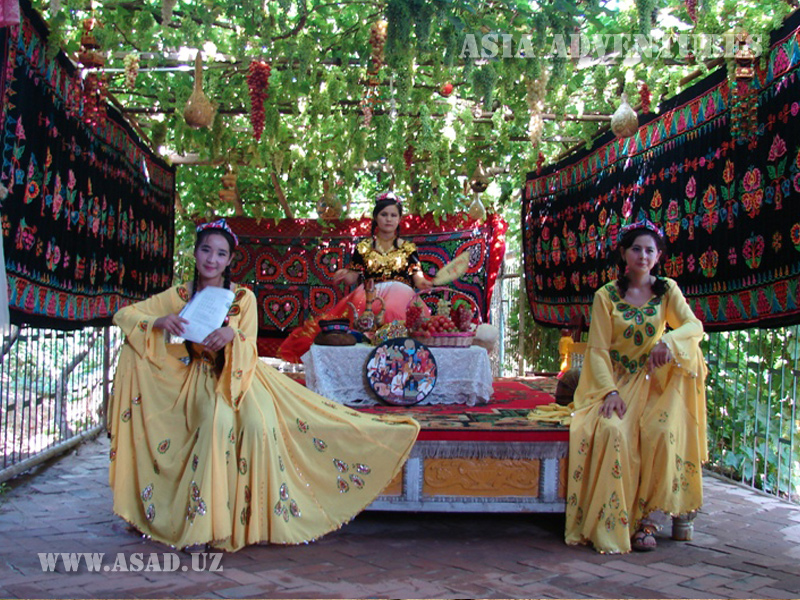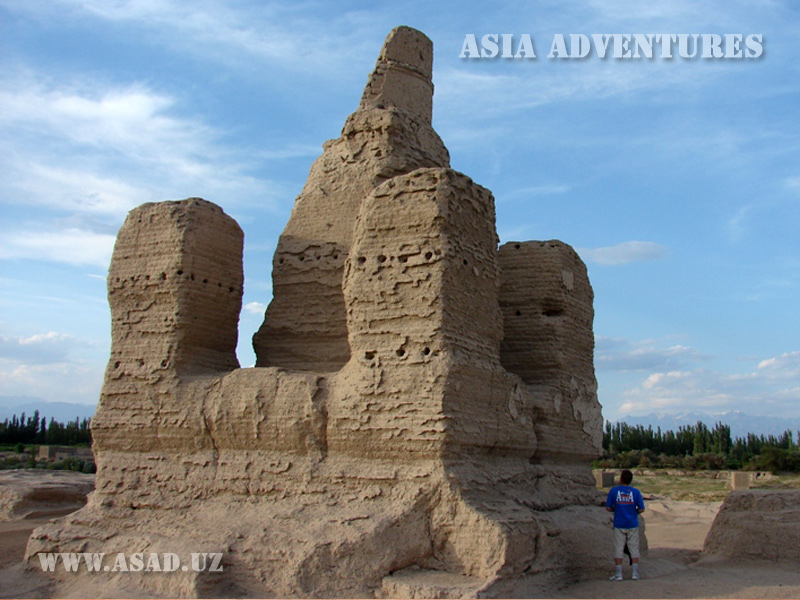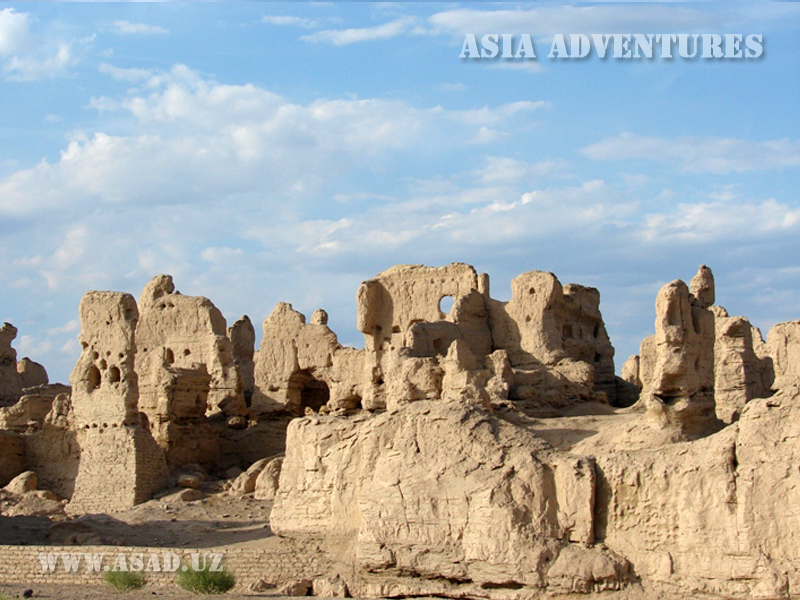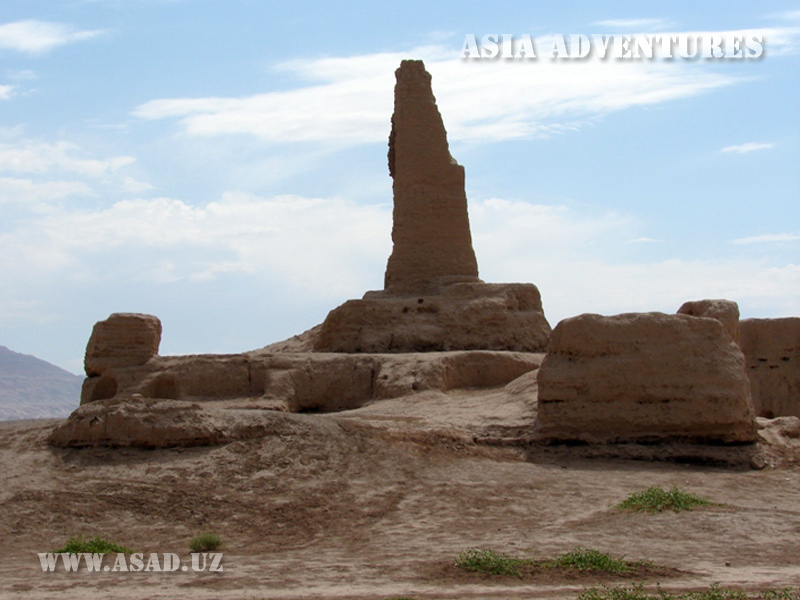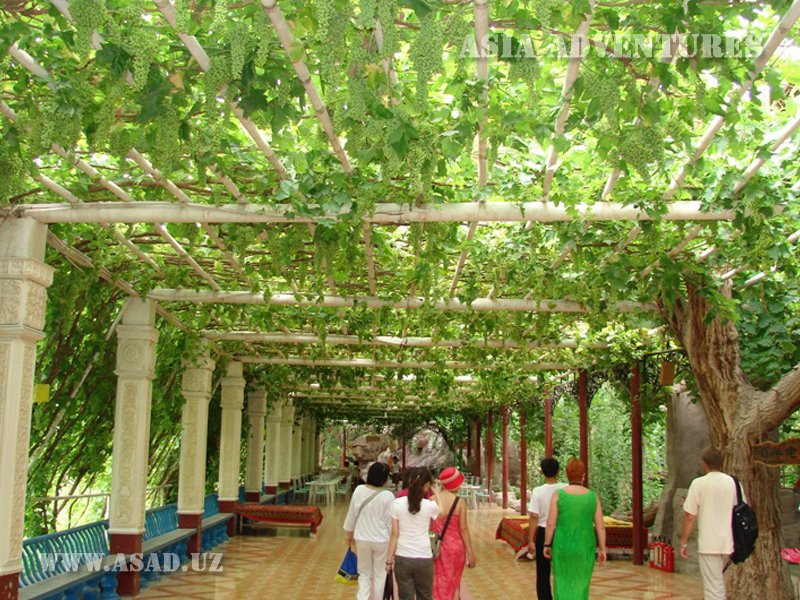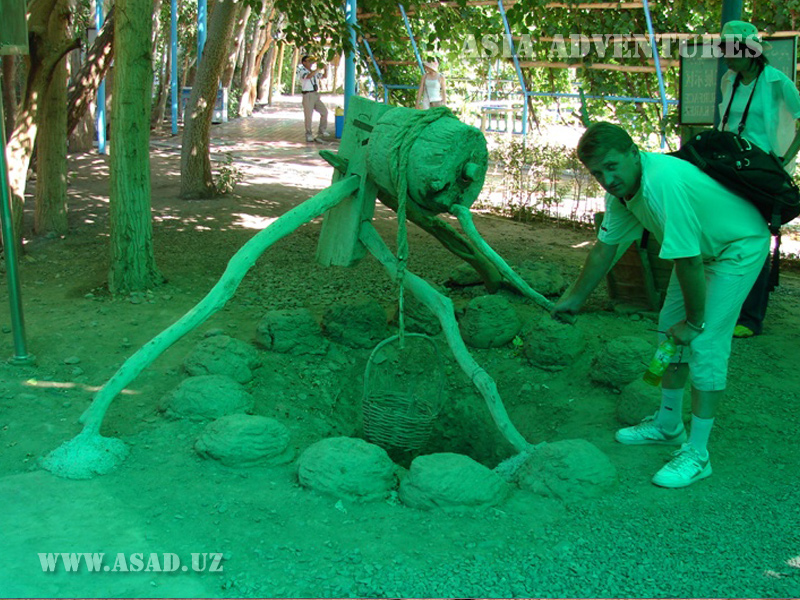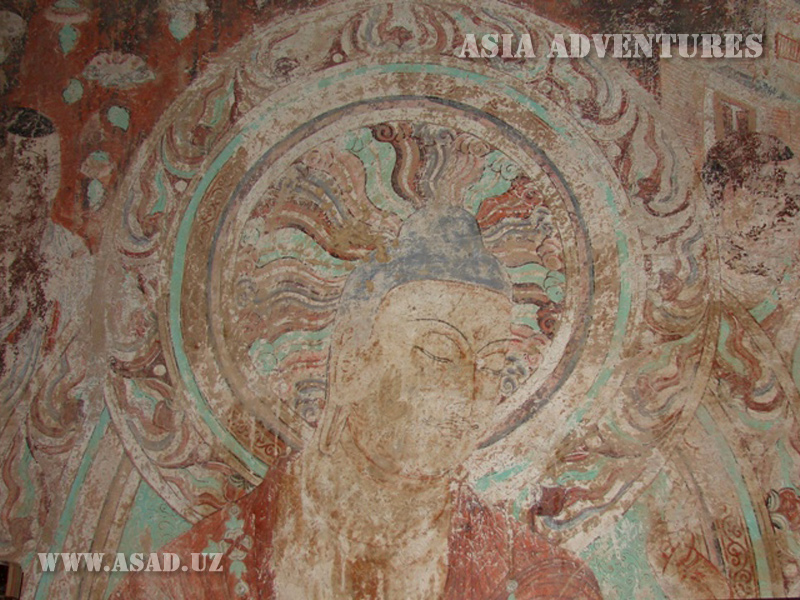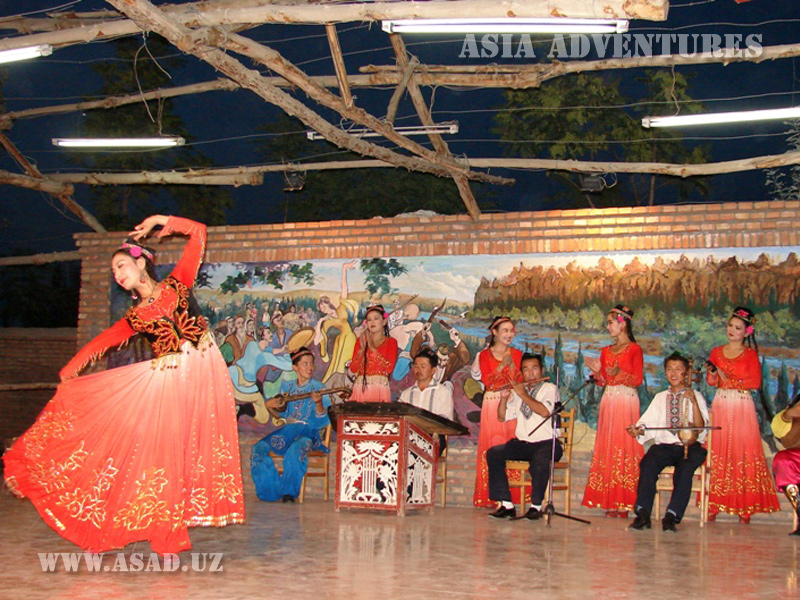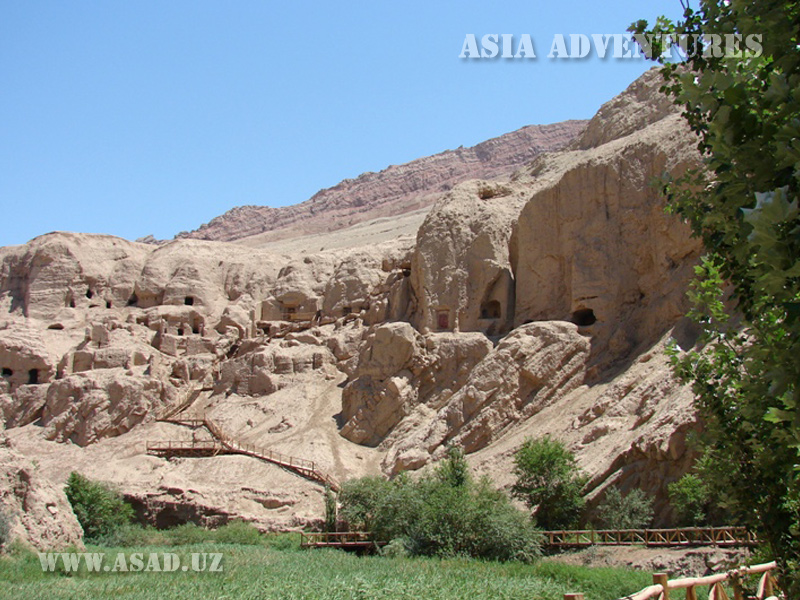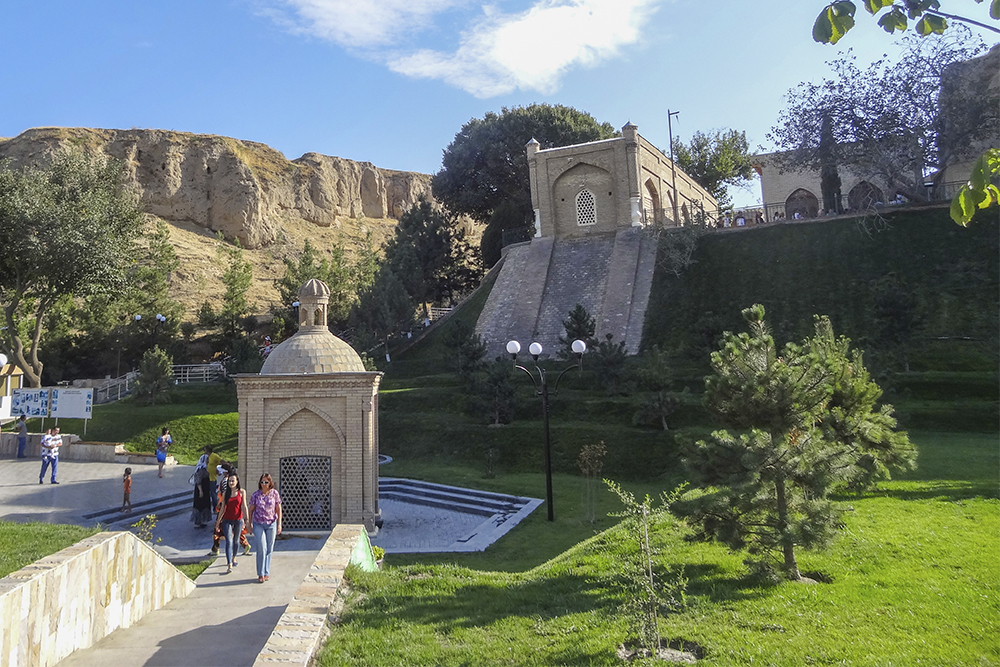Turpan / Turfan / Tulufan is a trading outpost on the ancient Silk Road, a city with more than 20 centuries history and the most interesting tourist center of Xinjiang. Turpan is located in 180 km to south-east from Urumchi on the border of the Gobi desert in the Turfan Basin, depth is 154 m below sea level (the second one of the depth after the Dead Sea basin in the world). Turpan is the hottest place in China, in summer the temperature here reaches 49 C (in winter to minus 20 C). Turpan is the driest place in China, and perhaps even in the world (less than 10 mm of rain per year). Turpan is the remote location from the sea (It is not less than 2,000 miles till the closest sea). The sweetest in the world of grapes-raisins is grown in Turpan.
Sights in and around Turpan
Emin (Imin) Minaret
Minaret of Turpan ruler Suleiman / Pagoda Sugun is the largest ancient Muslim tower in Xinjiang and throughout China. Emin Minaret is the most impressive architectural structure of Turfan.
Emin (Imin) Minaretmore details...
Jiaohe settlement
Among the many historical sites of Turfan, a settlement Jiaohe / Yargol / Yarghol is in the first place, it was the capital of the ancient state Cheshi (2300 years ago), and later – of Gaochang Kingdom, Western Areas (Tang 618-907) and the Uigur Khaganate. This is the largest and oldest well-preserved mud-brick fort in the world.
Jiaohe settlementmore details...
Settlement Gaochang
The ancient Gaochang town (forty six kilometers on south-east from Turpan near Yalkun Tag mountains (flaming Mountain)) was built in the first century BC, as a military outpost, a key town on Great Silk road. Before VII с. it was ruling city of over 21 cities. Many of Buddha temples were saved. The Kindom Karahodja was founded here in IX century. It was existed for 1400 years. It was destroyed in XIII century.
Settlement Gaochangmore details...
Necropolis Astana
Astana Karahodja Tombs are an ancient burial of people of Gaochang. Mummies, textiles and books, which are placed in underground vaults of almost two thousand years ago, perfectly preserved to this day.
Necropolis Astanamore details...
Bezeklik Thousand Buddha Caves
The famous Bezeklik cave temples of Thousand Buddhas are situated in the vicinity of Turfan in Mutos gorge, it is one of the largest Buddhist monuments in China, and this is the place of birth and spreading of Buddhism in China (VI cent. Gaochang kingdom). You can see series of niches cut into the cliffs on the steep walls of the gorge Muto.
Bezeklik Thousand Buddha Cavesmore details...
Tuyuk Village
Tuyuk village is located in 47 kilometers to west of Turpan city and in 13 km from the ancient city of Gaochang in the Grand Canyon of Tuyuk Valley, it is the oldest settlement in the Xinjiang Uighur. The settlement is over 2,000 years. Here still the sacred places exist,which attract a large number of local and foreign pilgrims.
Tuyuk Villagemore details...
Flaming Mountains
Flaming Mountains are located in 10 km to east of Turpan and represent a mountain range 100 km from east to west and 10 km wide. They are composed of reddish-brown sandstone, and under the sunshine it really looks like flames. Coloration of the mountains varies depending on the intensity of solar radiation and ambient temperature, making the mountains look like a living, changing its shape. Here temperature reaches 55C in summer.
Flaming Mountainsmore details...
Grape Valley
Buyluk Grape Valley is located in the famous Flame Mountains in 13 kilometers from Turpan. Its length is 8 km from north to south, a width is 2 km. This is a paradise of grape vines in 400ga located on different levels. The valley is irrigated by mountain kyariz water.
Grape Valleymore details...
Kyariz (kariz) – old irrigation system
Kyariz is an ancient irrigation system, which is established by the Uighurs over two thousand years ago. It is believed that the idea and technology of kyariz brought here on the Silk Road by ancient Iranians. Kyariz is distributed widely in Iran, Central Asia and even North Africa. But perhaps these irrigation systems have evolved in parallel, as even in those days, Turpan was a flourishing oasis, using plenty of water.
Kyarizmore details...
Museum of Turfan History
Turfan Central Museum is a concise history of Turfan oasis with a collection consisting of 5.000 of historical relics, pulled from Turpan Basin, beginning from the Paleolithic Age (about 3 million years BC) to modern days. This museum is the second one in the Xinjiang with the largest collection.
Museum of Turfan Historymore details...

 Centralasia Adventures
+998781506280
Centralasia Adventures
+998781506280
28, Mukanna str.
Uzbekistan
Tashkent region
100070

